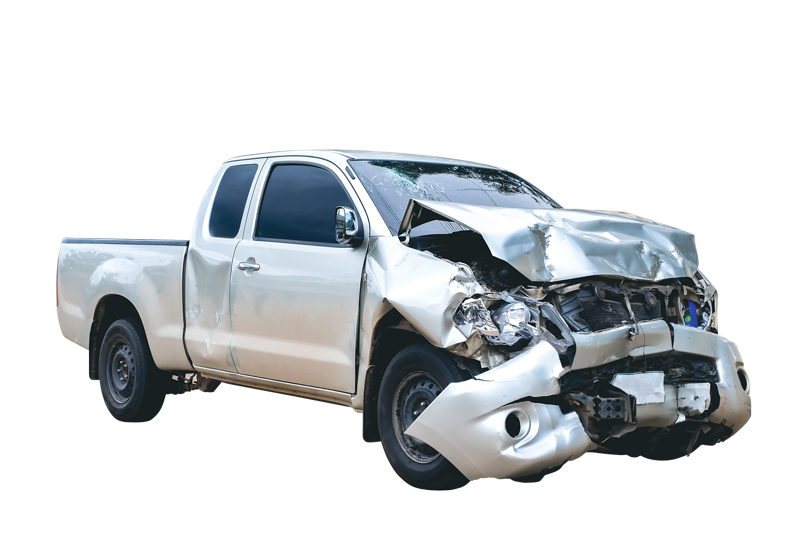Insurance rate mayhem: Rates soar following years of modest gains
More claims, increased costs lead to double-digit hikes, with some insurers pulling back

Rates in the marketplace for property and auto insurance policies have risen dramatically over the past year, prompted in response to factors that include the higher cost of reconstruction and repair, a dramatic rise in insurance claims, and the increasing frequency of natural disasters, industry experts say.
Aaron LeBlanc, owner of LeBlanc Insurance Group LLC, doing business as North Town Insurance, says insurance companies must provide reasons for their proposed increases to the Office of the Insurance Commissioner for the state of Washington each year. Generally, insurance carriers show how many dollars they took in for premiums, versus how much they paid out in claims.
“Based on that information, (insurance companies) can ask for a rate increase,” LeBlanc says. “And it was being denied very often, year after year during COVID … a lot of the inflation that happened during that time paired with their inability to take a rate increase. Now some significant (companies) are trying to play catch up.”
According to the state Office of the Insurance Commissioner, in 2023, the office approved a weighted average rate increase of 24.7% for auto insurance, compared to a 2.8% increase in 2022; no increase in 2021; and a 3% decrease in 2020. The average is weighted among the 20 companies writing private passenger insurance in Washington and make up 77% of the market, says Aaron VanTuyl, the communications manager for the state insurance office. Before the pandemic, insurance rates had relatively modest increases: 2.3% in 2019 and 1.5% in 2018.
The steep rate increases are particularly felt by business owners with vehicle fleets. Chelsea Morgan, owner of the Spokane-based catering business Chelsea Morgan Inc., doing business as A Catered Affair, says that auto insurance, liability insurance, and other rising costs prevent her from hiring or giving more work hours to her staff. As a result, Morgan has taken on a lot of the tasks for herself.
“Long term, I’m hoping things will change and prices will decrease,” Morgan says.
Property insurance also increased drastically from years prior. In 2023, the insurance commissioner's office approved a weighted average rate increase of 16.6%, compared to 3.9% in 2022; 1.1% in 2021; and 1.5% in 2020.
For the three years leading up to the pandemic, property insurance rate hikes weren't that different: in 2019, property insurance increased by 1.6%; in 2018 the increase was 3.7%. Prior to last year, rates hadn't increased by more than 5% in more than a decade; in 2012, property insurance premiums rose by 5.5%.
Kenton Brine, president of NW Insurance Council, says policyholders are witnessing a perfect storm of issues related to insurance. While the consumer price index for retail and food items went up 9% in the past couple of years, the rise within construction and labor ballooned as high as 40%, he says.
“Labor and materials are dramatically higher than pre-pandemic, and that’s another factor impacting insurance costs,” Brine says. “But the bottom line is for insurance consumers, whether they’re homeowners looking for coverage or business owners looking for coverage, it’s a challenging market in the property insurance market across Washington, across the West, and across the United States.”
The rise of extreme natural disasters, including tornadoes, hurricanes, and wildfires, has led to a dramatic rise in insurance payouts, Brine says.
"Wildfires have caused significant devastation for communities in Eastern Washington," he adds.
As a result of changing weather patterns that cause devastating losses, people are beginning to grasp the impact of climate change, Brine says.
Matt Walsh, president of Spokane-based Building Owners and Managers Association and assistant commercial property manager for Black Realty Management, says the extreme weather events in the past couple of years, including wind storms and extreme cold snaps, have caused excessive damage to many properties.
"It only makes sense that these catastrophic weather events are causing more insurance payouts," Walsh says.
Single property owners with a single insurance policy have seen a significant rise in rates, compared to owners of multiple properties who can get a better group rate, Walsh says. He's also heard of insurance carriers canceling premiums due to a high risk of damage, or to owners who have previously filed claims. Additionally, parts and labor have gone up significantly over the past couple of years, and costs are further exacerbated by supply-chain delays, Walsh says.
The rise in payouts and risk factors has caused insurance carriers to be selective about the places and businesses for which they offer policies. While no insurance carrier has completely stopped writing policies in the state of Washington, there have been many reports of carriers declining to write new business in certain communities or choosing not to renew policies for certain clients and areas considered at higher risk, Brine says.
“I want to make a distinction with what’s happening in California where insurers have announced they’re not writing new business period, with what’s happening in Oregon and Washington where it’s smaller pockets of areas,” Brine says. “I’ve heard of insurers saying they are reevaluating their risk exposure in some pockets of the state. You can imagine what those pockets are: they’re going to be areas that have suffered a large wildfire-related loss or have a higher risk of having that occur.”
Brine adds that he’s heard from many consumers, primarily in Eastern Washington, who are having difficulty obtaining homeowners insurance, which can be attributed to the higher likelihood of wildfires in the region.
It will likely take some time for the market to self-correct and rates to level off, he says.
LeBlanc says he hasn't seen any carriers leave Washington, but he has noticed selective underwriting, including halting coverage for structures of a certain age, or a dislike for certain types of businesses. If a policyholder has had a claim, many carriers are choosing not to renew, LeBlanc says.
Some clients may be affected who never had a claim.
"The carrier used to be OK with (for example) a 40-year-old commercial building, and they’ve now made new underwriting guidelines saying the building has to be 30 years or newer, so then we have to find a new market,” LeBlanc says.
After the Oregon Road and the Grey fires in Spokane County last year, many insurers also are choosing not to do business in those ZIP codes, LeBlanc says. This is felt by individual homeowners, but it’s also beginning to happen to business owners, he adds.
Just like the cost to rebuild a structure has risen, Brine says, the cost to repair vehicles also has increased significantly. Vehicles are now more technologically advanced and are equipped with things like sensors and cameras, which are expensive to repair or replace.
In addition, the number of serious car wrecks also has risen, leading to large payouts for medical expenses, Brine says.
According to the Washington Department of Transportation, the number of automobile accidents in 2023 totaled 78,116–a 10-year low–and down from 103,315 total crashes in 2022. However, while there were fewer crashes in 2023, the number of serious collisions was higher than in previous years, with 772 people killed in car wrecks statewide in 2023, up from 745 in 2022, the most in three decades, the agency reports.
“The seriousness of crashes is going up, even if the number of crashes is leveling off,” Brine says. “A vehicle where there is a fatality means there are probably other people injured … and the cost of treating injuries with medical care is also higher.”
Brine says communities across the country also are experiencing a rise in serious car wrecks with fatalities.
“The rates of fatal crashes in this country have exploded,” Brine says. “It’s a psychological issue that I’m not sure we’ve got to the bottom of yet.”
For enterprises looking ahead and wondering how to mitigate insurance costs, LeBlanc advises owners to build a focused business plan that communicates how the company operates, avoid mixing several businesses under one umbrella, and have a dedicated professional in charge of accounting. For businesses with fleets, he advises to shop around and stay ahead of renewal dates.
More broadly, there also are steps that communities can take to help lower the cost of insurance within their ZIP codes or avoid carriers from opting out of doing business with high-risk communities, Brine says.
Having buildings that are hardened against wildfire, and an involved community taking steps to reduce catastrophic loss can make the difference between paying out claims to a dozen properties versus a thousand properties, Brine says.
“(Wildfires) are not going away. In fact, they are going to get worse, so we better figure out ways to prepare for it, live with it, and minimize the loss from it,” Brine says.





